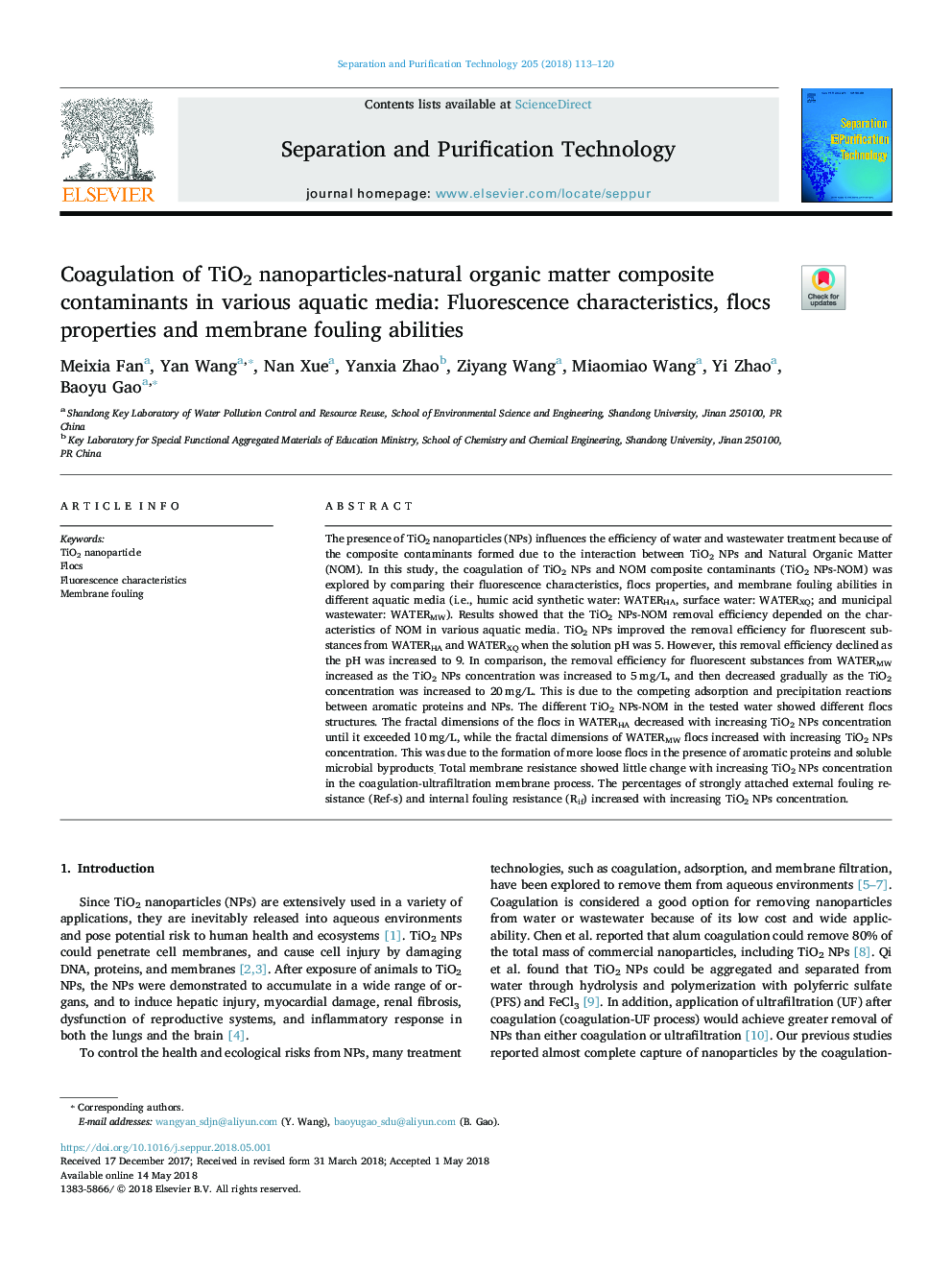| کد مقاله | کد نشریه | سال انتشار | مقاله انگلیسی | نسخه تمام متن |
|---|---|---|---|---|
| 7043616 | 1456915 | 2018 | 8 صفحه PDF | دانلود رایگان |
عنوان انگلیسی مقاله ISI
Coagulation of TiO2 nanoparticles-natural organic matter composite contaminants in various aquatic media: Fluorescence characteristics, flocs properties and membrane fouling abilities
دانلود مقاله + سفارش ترجمه
دانلود مقاله ISI انگلیسی
رایگان برای ایرانیان
کلمات کلیدی
موضوعات مرتبط
مهندسی و علوم پایه
مهندسی شیمی
تصفیه و جداسازی
پیش نمایش صفحه اول مقاله

چکیده انگلیسی
The presence of TiO2 nanoparticles (NPs) influences the efficiency of water and wastewater treatment because of the composite contaminants formed due to the interaction between TiO2 NPs and Natural Organic Matter (NOM). In this study, the coagulation of TiO2 NPs and NOM composite contaminants (TiO2 NPs-NOM) was explored by comparing their fluorescence characteristics, flocs properties, and membrane fouling abilities in different aquatic media (i.e., humic acid synthetic water: WATERHA, surface water: WATERXQ; and municipal wastewater: WATERMW). Results showed that the TiO2 NPs-NOM removal efficiency depended on the characteristics of NOM in various aquatic media. TiO2 NPs improved the removal efficiency for fluorescent substances from WATERHA and WATERXQ when the solution pH was 5. However, this removal efficiency declined as the pH was increased to 9. In comparison, the removal efficiency for fluorescent substances from WATERMW increased as the TiO2 NPs concentration was increased to 5â¯mg/L, and then decreased gradually as the TiO2 concentration was increased to 20â¯mg/L. This is due to the competing adsorption and precipitation reactions between aromatic proteins and NPs. The different TiO2 NPs-NOM in the tested water showed different flocs structures. The fractal dimensions of the flocs in WATERHA decreased with increasing TiO2 NPs concentration until it exceeded 10â¯mg/L, while the fractal dimensions of WATERMW flocs increased with increasing TiO2 NPs concentration. This was due to the formation of more loose flocs in the presence of aromatic proteins and soluble microbial byproducts. Total membrane resistance showed little change with increasing TiO2 NPs concentration in the coagulation-ultrafiltration membrane process. The percentages of strongly attached external fouling resistance (Ref-s) and internal fouling resistance (Rif) increased with increasing TiO2 NPs concentration.
ناشر
Database: Elsevier - ScienceDirect (ساینس دایرکت)
Journal: Separation and Purification Technology - Volume 205, 31 October 2018, Pages 113-120
Journal: Separation and Purification Technology - Volume 205, 31 October 2018, Pages 113-120
نویسندگان
Meixia Fan, Yan Wang, Nan Xue, Yanxia Zhao, Ziyang Wang, Miaomiao Wang, Yi Zhao, Baoyu Gao,